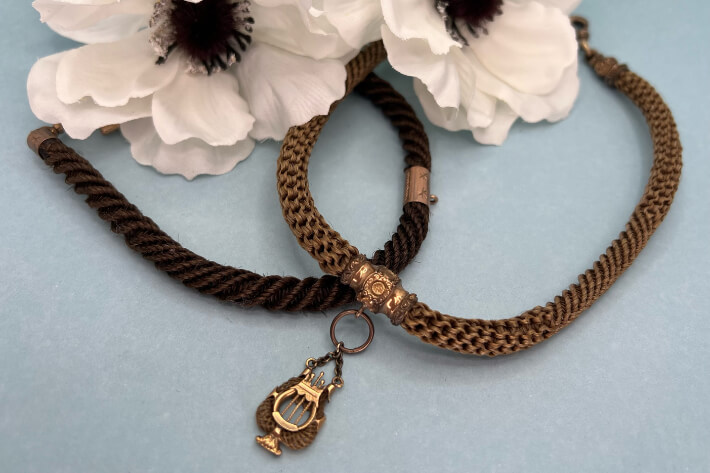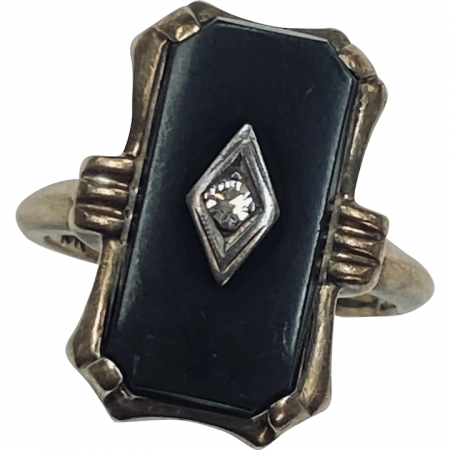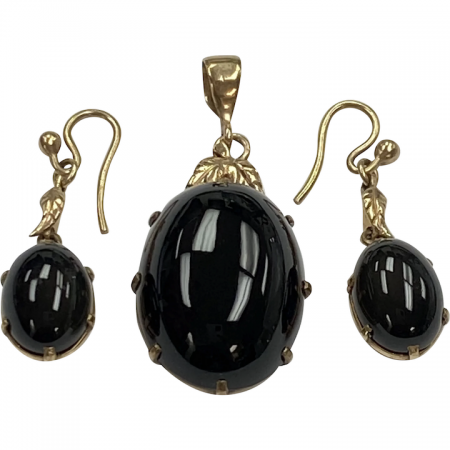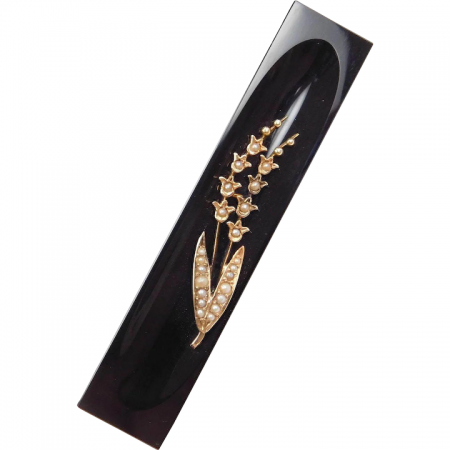The Stories Held Within: A Guide to Victorian Era Mourning Jewelry

Mourning jewelry has existed for centuries, serving as a tangible expression of grief and a way to commemorate loved ones who have passed. However, in the Victorian era, mourning jewelry held a unique place in history, reflecting the societal values and deep mourning practices of the time. This blog post will delve into the captivating world of Victorian mourning jewelry, unveiling the stories these pieces hold within.

A Time of Deep Mourning: The Victorian Era and Its Customs
The Victorian Era, from 1837 to 1901, was marked by a profound sense of propriety and decorum. Queen Victoria’s prolonged mourning after the death of her husband, Prince Albert, in 1861 significantly influenced societal mourning customs. Strict etiquette dictated specific mourning periods and attire. Deep mourning, typically observed for a year by widows, involved wearing black clothing and jewelry made from black gemstones. Half-mourning, observed for several years, allowed for lighter colors and materials like amethyst or bog oak.

The Victorians embraced the concept of “memento mori,” a Latin phrase meaning “remember you must die.” Mourning jewelry served as a constant reminder of mortality and a way to keep the memory of the deceased close.
More Than Just Black: A Universe of Symbols
While black was the dominant color in Victorian mourning jewelry, the materials used went far beyond. Each material held a specific meaning:
- Jet: The most popular choice, symbolizing grief and mourning due to its deep black color.
- Bog Oak: A type of naturally darkened wood, representing strength and endurance.
- Hair: Woven into lockets or mourning rings, a deeply personal memento of the deceased.
- Enamel: Often used to create detailed imagery on lockets or brooches.
- Metal: Gold, silver, and even iron were used, with the quality reflecting the wearer’s social status.
Motifs and symbolism played a crucial role in Victorian mourning jewelry:

- Loss and Sorrow: Weeping willows, urns, drapery, and forget-me-nots all represented grief and loss.
- Religious Faith: Crosses, praying hands, and angels offered solace and hope for the afterlife.
- Enduring Love: Crossed hands, intertwined rings, and hearts symbolized everlasting love and devotion.
- Memorialization: Lockets containing portraits of the deceased or engraved dates served as a permanent reminder.
Beyond Aesthetics: The Purpose and Legacy of Mourning Jewelry
Victorian mourning jewelry served various purposes:
- Public Display of Grief: Following societal expectations and expressing the depth of one’s loss.
- Commemoration: Keeping the memory of the deceased alive and cherished.
- Sentimentality: A cherished token of love and connection between the wearer and the departed.
- Status Symbol: The quality of materials and craftsmanship reflected the wearer’s social standing.
It’s important to acknowledge that Victorian mourning practices were sometimes criticized as excessive or performative. However, the cultural significance of mourning jewelry remains undeniable. These pieces transcended mere aesthetics, offering comfort, a way to process grief, and a lasting tribute to loved ones. The influence of Victorian mourning jewelry can still be seen in contemporary mourning practices and jewelry design.
Conclusion: A Timeless Legacy
Victorian era mourning jewelry offers a glimpse into a bygone era’s customs and societal attitudes towards death. While mourning traditions have evolved, these beautiful and pieces continue to last with us today. In fact, they serve as a reminder of the enduring power of love, memory, and the human spirit in the face of loss.
Shop Mourning Jewelry at Arnold Jewelers
Fascinated by Victorian mourning jewelry? We invite you to explore our collection of antique or replica pieces at Arnold Jewelers. Let these captivating objects spark your curiosity and inspire you to learn more about the stories they hold. Also, share your thoughts and questions about Victorian mourning jewelry in the comments below!
Looking for a unique piece to add to your collection?
-
Categories:
- Jewelry Trends
- Jewelry Trends & Gift Ideas
